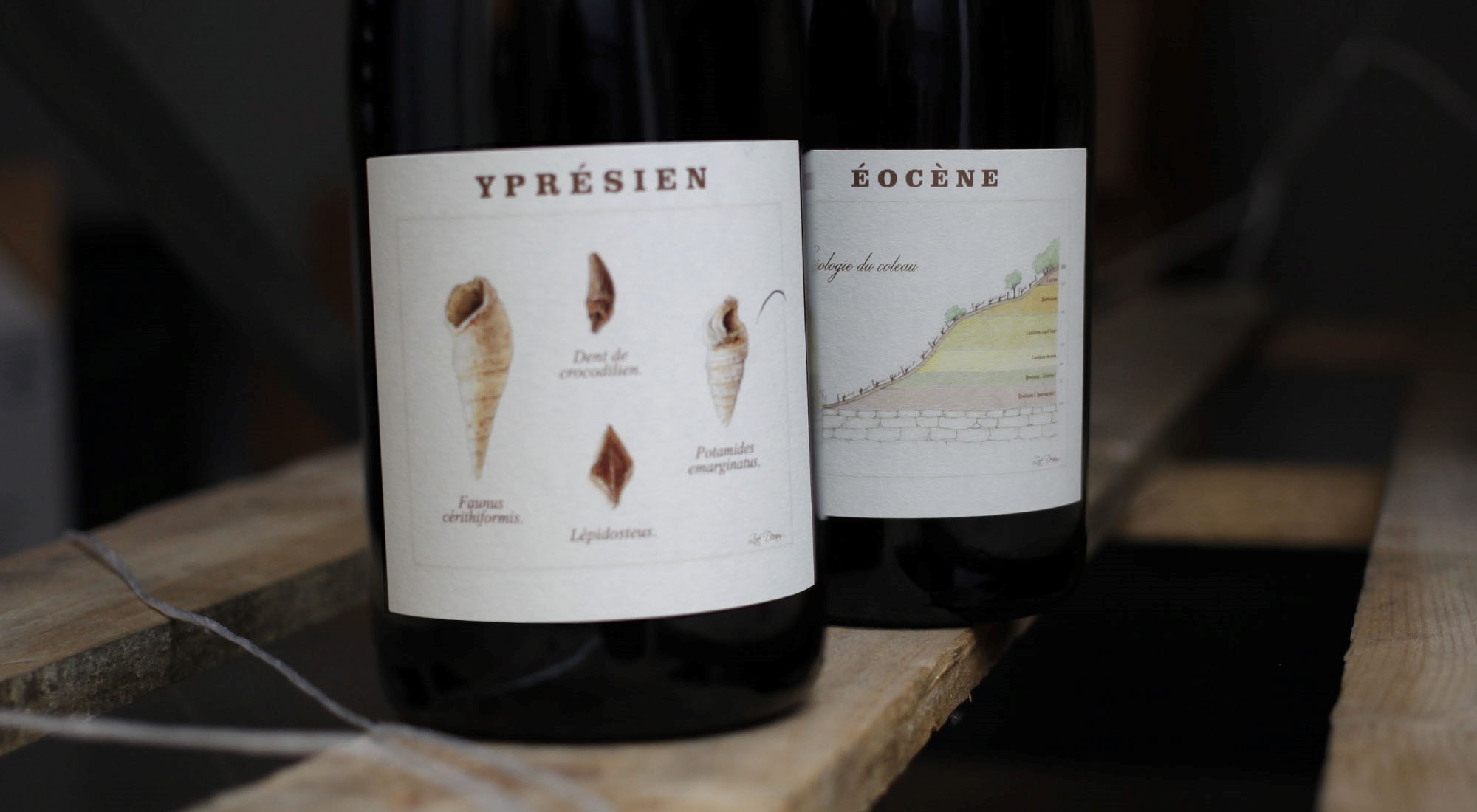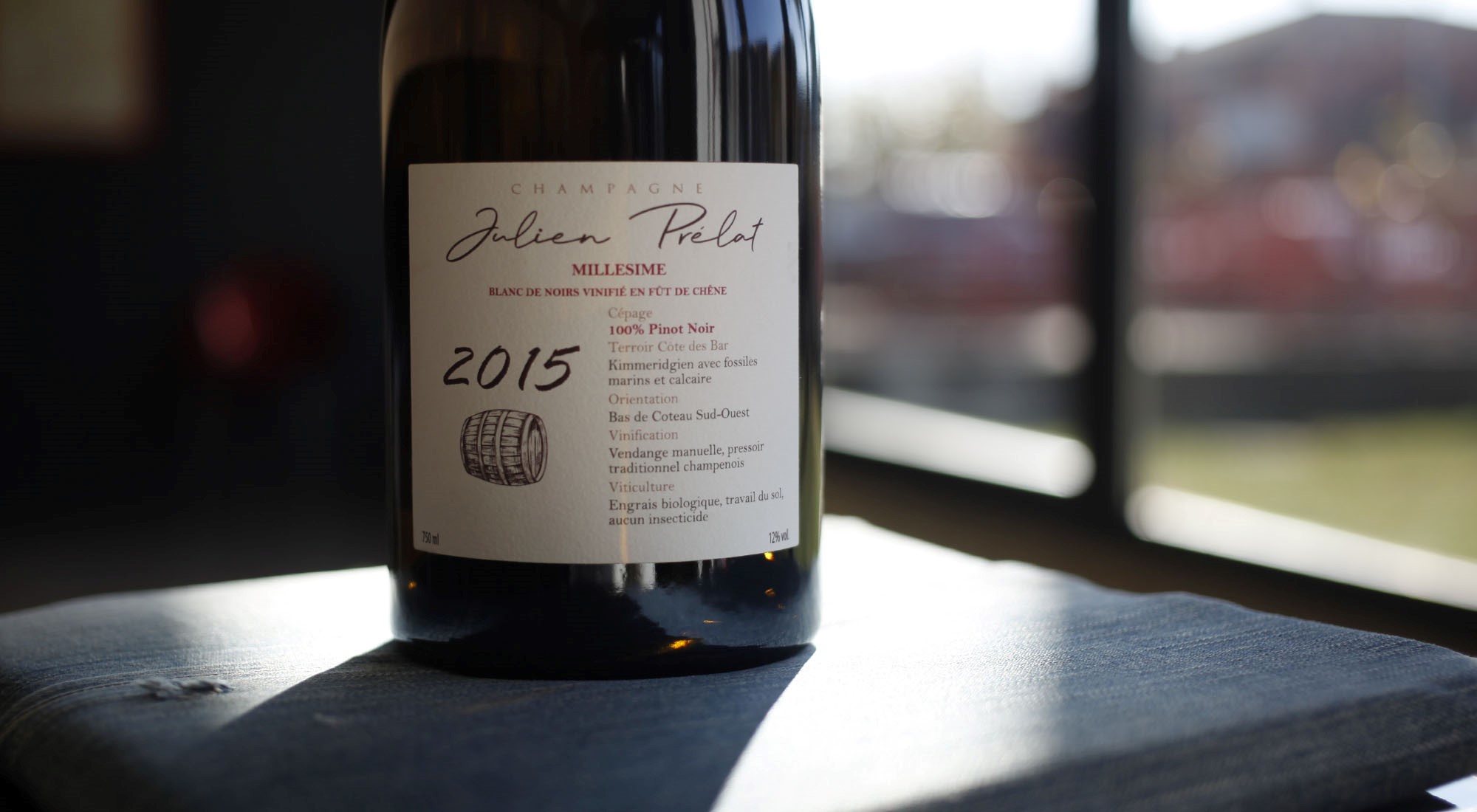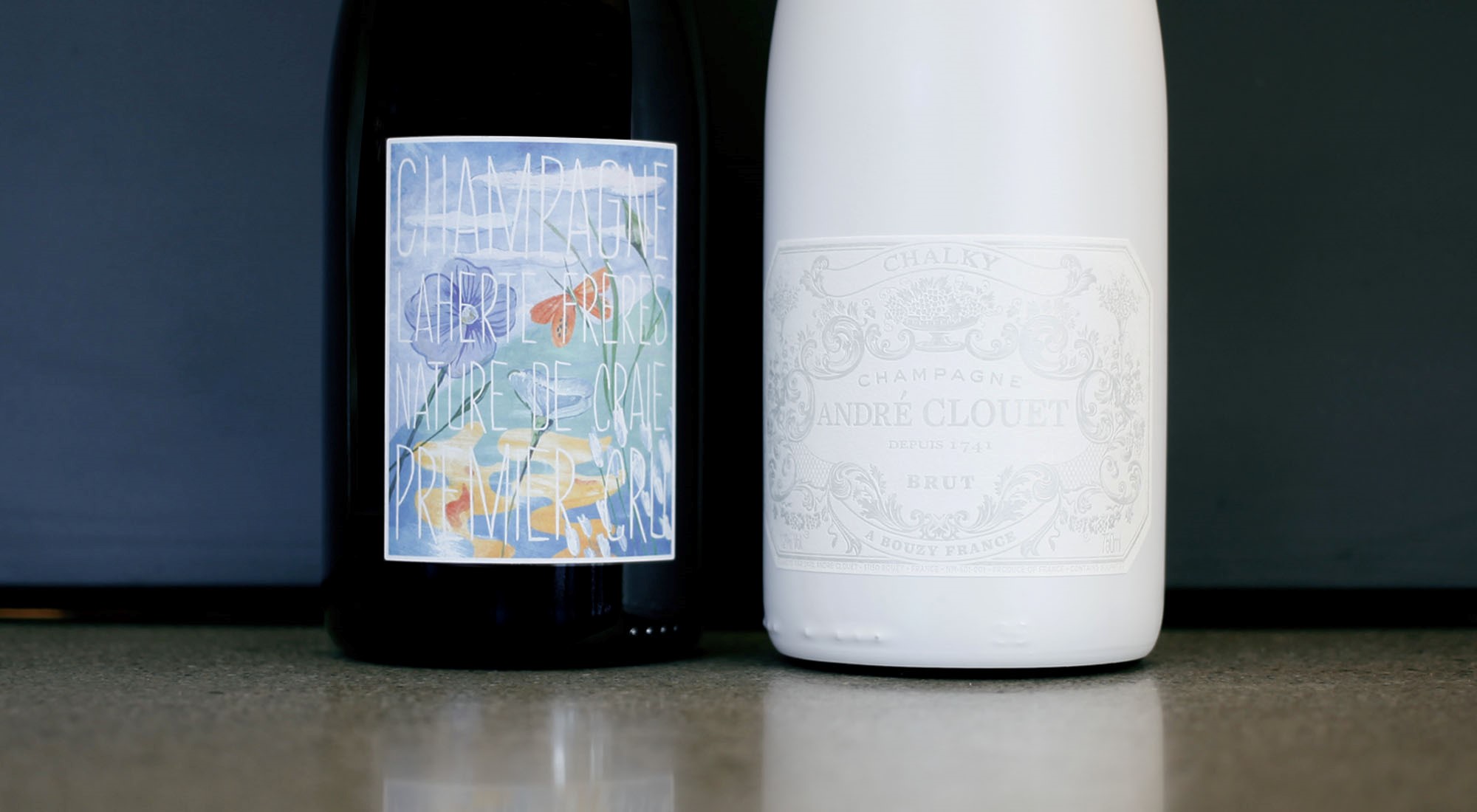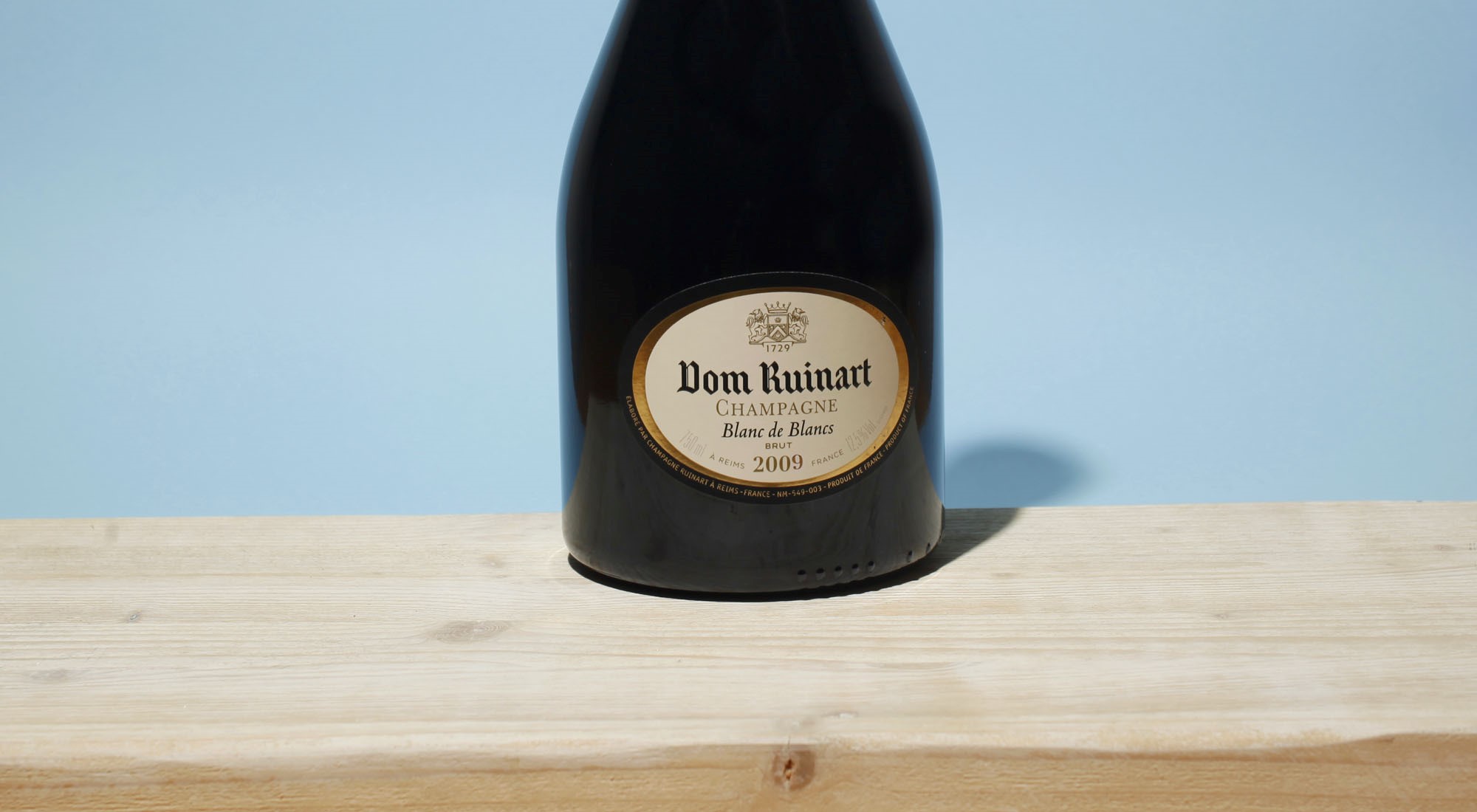Champagne wines are undoubtedly extraordinary products, but why are they so unique? The answer lies in the region's mix of geological, morphological and climatic characteristics, but it is above all the exceptional nature of its terroir that makes it incomparable.
The extraordinary conformation of the terrain of the "Bassin Sédimentaire Parisien", the ancient depression on which Champagne is built, is due to the rich presence of sediments deposited by the ocean during the geological Mesozoic era (approximately 225 to 65 million years ago) and the lagoons and salt lakes of the Cenozoic (65 to 3 million years ago).
The result was the formation of a calcareous layer of sediments of different origins and composition, including marly and chalky limestone (calcareous sediments of marine origin) and clayey (of lake and lagoon origin).
And it is on these soils that today, thousands of years later, the vines sink their roots penetrating the depths of these deposits, absorbing the saline and mineral elements in which they are extremely rich.

Patrice Legrand, of Domaine Legrand-Latour, is perhaps one of the most concrete examples of celebration of terroir: a geology enthusiast, he created the family's ageing cellar in the famous "Cave aux Coquillages", or shell cellar, an underground archaeological museum created over 30 years of excavations that brought to light fossils from the Cretaceous and Paleocene periods, the geological eras of greatest interest to Fleury-la-Rivière, from 95 to 20 million years ago.
Champagne Yprésien and Éocène are the result of his son Thibaut's ambitious project to create Champagne by geological range. Agronomic part in organic, aging and disgorgement in the bowels of his land alongside the fossils, with a stable climate balance throughout the year.
Champagne Yprésien, which takes its name from the Ypresian, the first of the four levels into which the Eocene is divided on the scale of geological time (from 55 to 48 million years ago), is a Blanc de Noirs that plays on the subtle ripples of the two varieties that make it up, namely 70% Meunier and 30% Pinot Noir, and which here express themselves on the vertical sapidity and marine skeleton of the soil.
The Campaniles giganteum fossils drawn on the bottle label are nothing more than tapered snails found and catalogued in their hundreds by Patrice Legrand during his excavations.
Instead, Champagne Éocène takes its name from the Eocene geological era, which runs from 55 million to 33 million years ago, and which is in turn divided into four levels: the Priabonian (37 to 33 million years ago) the Bartonian (40 to 37 million years ago) the Lutetian (48 to 40 million years ago) and the Hypresian (55 to 48 million years ago).

Also Domaine Julien Prélat offers Champagne that reflects the strong link between Champagne and geology, reinforced by the originality of the terroir on which it is located: Champagne Millésime 2015, 100% Pinot Noir comes from a parcel of vines, over 37 years old, located on limestone soils rich of marine fossils in the Celler-sur-Ouce village, in the Côtes des Bar. This Champagne is the fruit of Julien's continuous search for perfection, who composes his wines without mixing cuvées, thus keeping intact the peculiarities of each grape variety and terroir. A mineral expression of the subsoil, the Champagne Millésime 2015 has great complexity, structure and a long, savoury finish.
During the succession of marine transgressions and regressiosn that characterised the geological eras, the chalky sediments, formed by accumulations of shells and calcareous micro-organisms, solidified to form the "craie" chalk, one of the main components of the terroir of the Champagne region.
On a geological level, the "craie" brings a double added value: in addition to being a hydro-thermal regulator capable of absorbing excess rainwater, preserving the roots from stagnation and gradually returning the necessary humidity to them; it is also capable of storing the heat of the day and then releasing it during the cold winter nights.

For example, Champagne Chalky (from English chalk), is a clear example of how the producer, André Clouet has chosen to celebrate the close connection between Champagne and geology, which in this case is represented by the chalky terroir, also recalled in the particular "total white" packaging. This Blanc de Blancs is made from a blend of 100% Chardonnay from Côte des Blancs and Montagne de Reims vineyards (from the commune of Bouzy to be precise), 10 hectares classified as Grand Cru located on cool chalky soils.
Also Champagne Nature de Craie from Maison Laherte Freres perfectly reflects the link with the terroir: pure Chardonnay, the grapes come from plots located in the communes of Chavot and Epernay, in the Vallée de la Marne, from soils mainly composed of friable chalk and fine clays. A true expression of terroir, this Champagne offers savoury, chalky and mineral notes and a pleasant, vibrant freshness. A pure Champagne, a direct revelation of the grape variety.

Among the region's historic wine cellars, Maison Ruinart cellars, carved out of chalk and designated an UNESCO World Heritage Site, are definitely worth a visit. These chalk quarries, also known as 'Crayères', are about twenty and they extend on two levels, for about 8 km. An ideal environment for ageing wine, they are dug into the subsoil of Reims, at a depth of almost 40 m, and they represent a unique immersion in the geology of Champagne.
Among the Champagne of the Maison, Champagne Blanc de Blancs Dom Ruinart 2009 is composed entirely of Grand Cru Chardonnay, 82% from the Côte des Blancs (Cramant, Avize, Chouilly and Le Mesnil-sur-Oger) and 18% from the northern side of the Montagne de Reims (Sillery). Characterized by freshness, complexity and power, expertly dosed with precision and elegance, it matures for 9 years in the depths of the "Crayères" excavated in the chalk of the Maison.
Discover here the selection of GLUGULP! Champagnes
